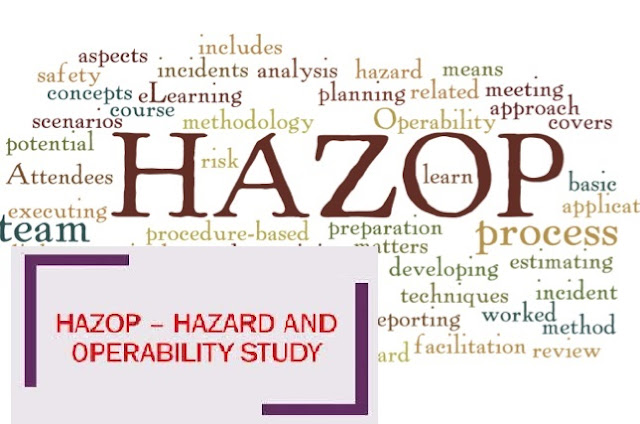HAZOP STUDY METHODOLOGY IN SAFETY – Basic
HAZARDOUS AREA CLASSIFICATION PART 4
LEADING CAUSES OF WORK RELATED INJURIES
HAZOP - Hazard and
Operability Study
Structured and Systematic technique
to IDENTIFY potential HAZard and OPerating issues.
Involves a multi-disciplinary team
methodically “brainstorming” the plant design.
A qualitative technique based on
“guide-words” to help provoke thoughts about the way deviations from
the intended operating conditions
can lead to hazardous situations or operability problems.
A HAZOP study is an examination
procedure.
Its purpose is to identify all
possible deviation from the way in which a design is expected to work and to
identify all the hazards associated with these deviations.
When deviation arise that results in hazards, action are generated that require design engineers to review and suggest solutions to remove the hazard or to reduce its risk to an acceptable level.
HAZOP were initially 'invented' by
ICI in the United Kingdom, but the technique only started to be more widely
used within the chemical process industry after the Flixborough disaster in
1974.
This chemical plant explosion
killed twenty eight people and injured scores of others, many of those being
members of the public living nearby.
Through the general exchange of
ideas and personnel, the system was then adopted by the petroleum industry,
which has a similar potential for major disasters.
This was then followed by the food
and water industries, where the hazard potential is as great, but of a
different nature, the concerns being more to do with contamination rather than explosions
or chemical releases.
Hazop Study having the below objectives
Safety Issues:
– To identify scenarios that would
lead to the release of hazardous or flammable material into the atmosphere,
thus exposing workers to injury
– To check the safety of the design
– To improve the safety of an
existing and or modified facility
Operability Issues:
– To decide whether and where to
build
– To check operating and safety
procedures
– To verify that safety
instrumentation is working optimally
– To facilitate smooth, safe prompt
start-up
– To minimize extensive last minute
modifications
– To ensure trouble-free long-term
operation
FREE - ISO 45001 AUDIT CHECKLIST : PART 2





No comments:
Post a Comment